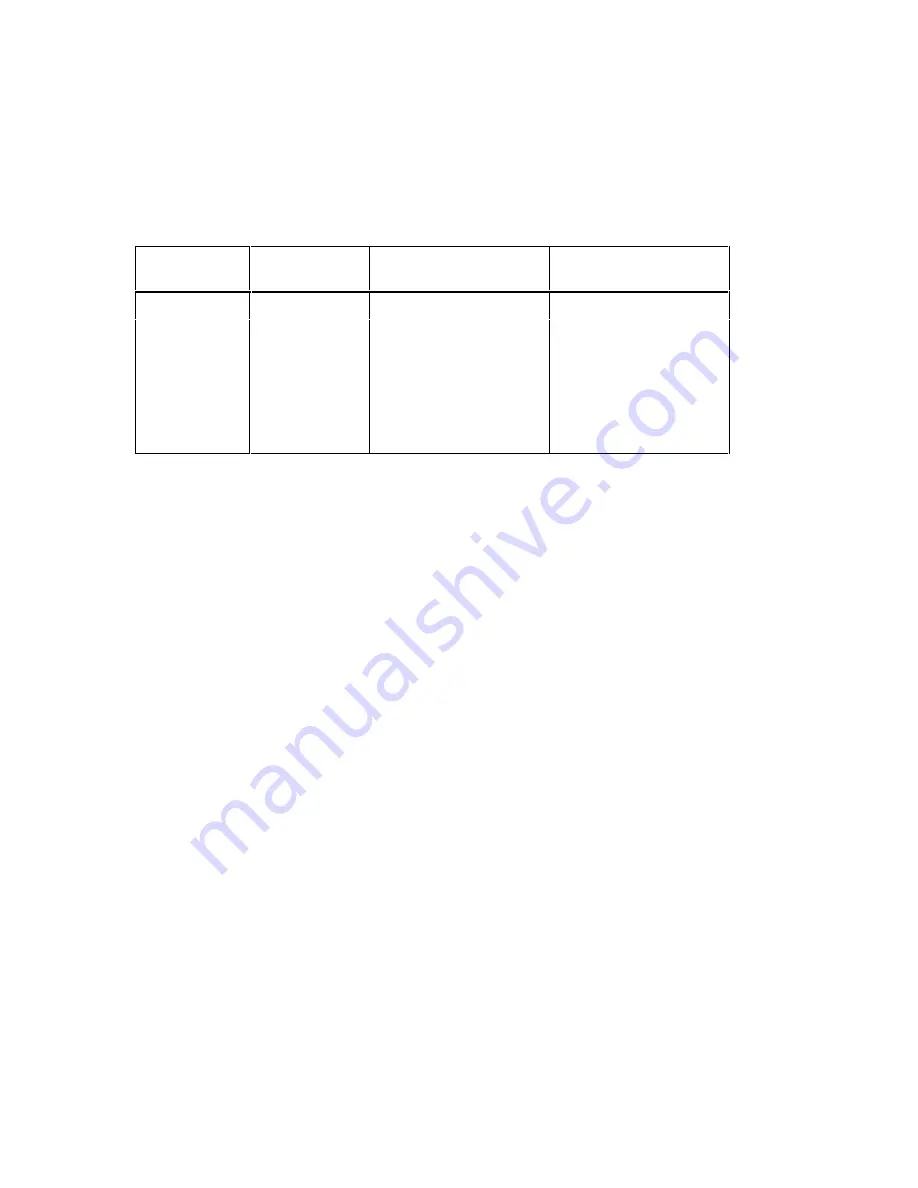
3-5
Characters in either character set corresponding to control codes cannot be directly displayed.
These characters must be displayed by other means, as described previously in this chapter under
the heading, Control Codes.
See Chapter 5 for additional information about using graphic codes to display characters,
7DEOH5HSUHVHQWLQJELW&RQWURO&RGHV:LWK%LW(VFDSH6HTXHQFHV
01(021,&
+(;9$/8(
1$0(
(48,9$/(17%,7
6(48(1&(
,1'!
,QGH[
(6&!'
1(/!
1H[W/LQH
(6&!(
5,!
'
5HYHUVH,QGH[
(6&!0
'&6!
'HYLFH&RQWURO6WULQJ
(6&!3
&6,!
%
&RQWURO6HTXHQFH,QWURGXFHU
(6&!>
67!
&
6WULQJ7HUPLQDWRU
(6&!?
7&6&200$1'6
Touch Control Screen commands are the actions that the host or user can take to control the
TCS. Commands allow the host to display touchkeys and text, select character attributes, move
the cursor, and delete text from the display. If the user also has access to the Setup Screen, the
commands enable the user to do several functions such as change the Setup Screen parameters,
align the display, and run tests.
All Touch Control Screen commands are summarized in Appendix B. For clarity, most control
codes are not repeated in Table B-1.
7<3(62)&200$1'6
Touch Control Screen commands can be categorized according to their source:
•
Local commands
•
Remote commands
•
Local/remote commands
/RFDO&RPPDQGV
Local commands are actions the user can take by means of the Setup Screen or by pressing
certain keys on an optional keyboard.
For example, the user issues the Baud Rate command by entering the Setup Screen and, using
touchkeys or the keys on an optional keyboard, selecting the baud rate. Likewise, the user can
send the Short Break command by pressing the Break key.
Summary of Contents for Dynapro ET TCS
Page 1: ......
Page 127: ...5 40 LJXUH QFRGLQJ WKH 6L HOV...
Page 194: ...6 4 LJXUH 7RXFKNH 9LVXDO WHQW...
Page 310: ......
Page 311: ......
Page 312: ......
Page 313: ......
Page 314: ...ASCII Code Custom Character Pattern Chart ASCII Code ASCII Code ASCII Code...






























